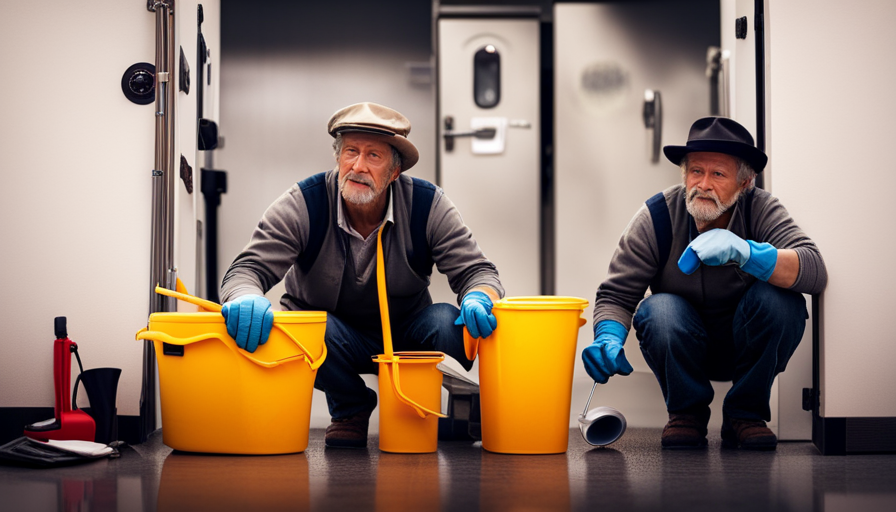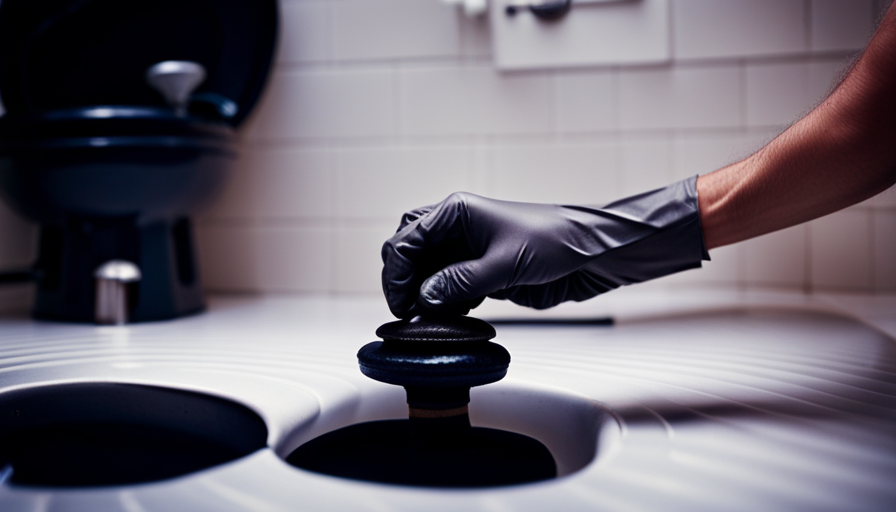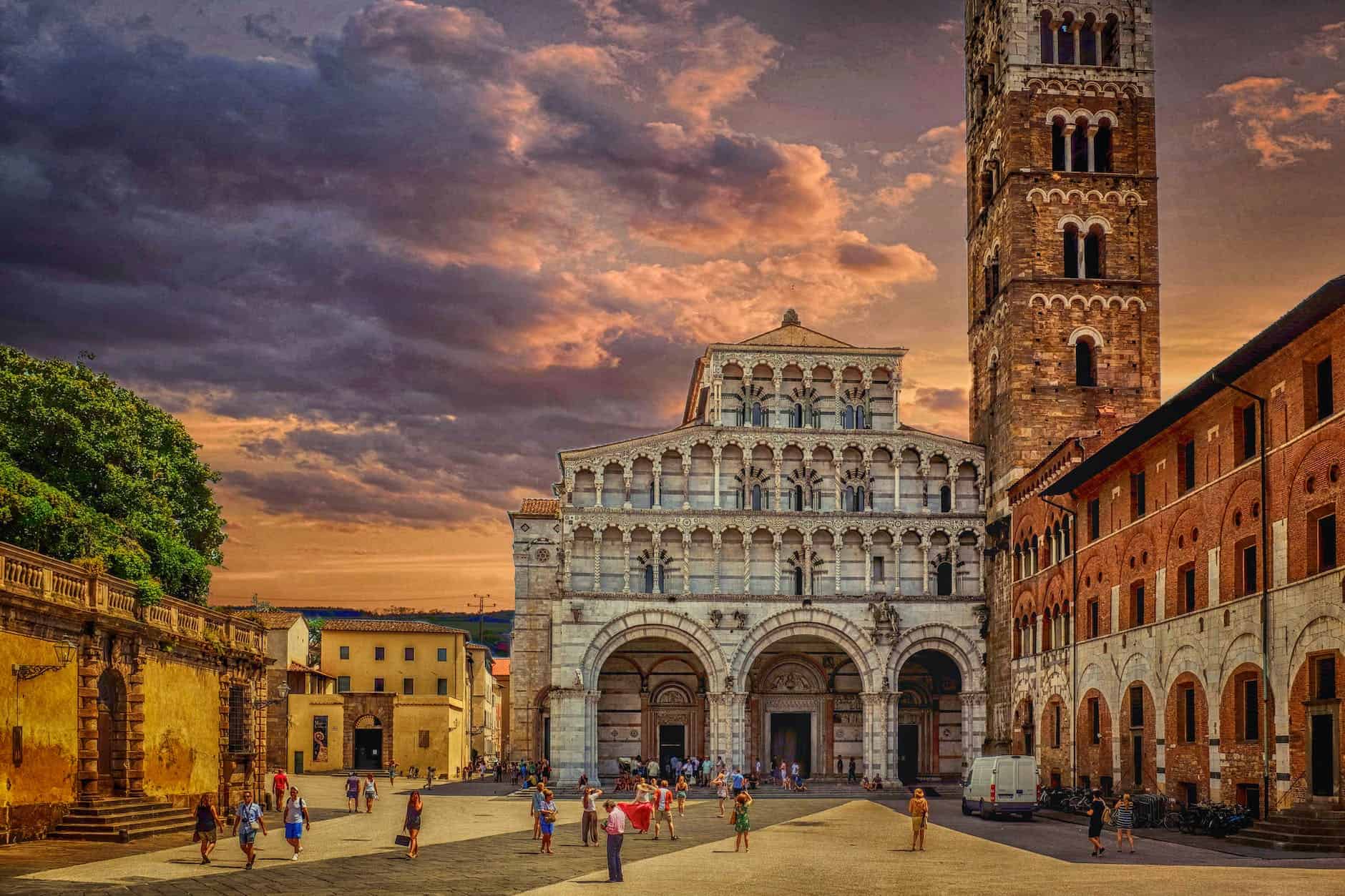Welcome to our guide on unclogging a toilet in an RV!
Picture this: you’re out in the great outdoors, enjoying the freedom and adventure of camping, when suddenly your toilet decides to play a not-so-fun game of ‘let’s get clogged.’ We’ve all been there, and let’s face it, it’s never a pleasant experience. But fear not, fellow campers, because we’re here to help you tackle this messy situation head-on.
In this article, we’ll walk you through a step-by-step process to unclog your camper toilet and get back to enjoying your outdoor escapades. From assessing the severity of the clog to utilizing various tools and remedies, we’ve got you covered. We’ll even share some tips on preventing future clogs with regular maintenance.
So, grab your plunger and put on your DIY hat, because we’re about to dive into the nitty-gritty of unclogging that stubborn toilet in your camper. Let’s get this problem flushed away and get back to enjoying the beauty of nature!
Key Takeaways
- Assess the severity of the clog by observing the water level in the toilet bowl and checking for slow or no drainage.
- Gather necessary tools and supplies such as a plunger, rubber gloves, bucket, and plumbing snake to unclog the toilet.
- Use natural remedies like baking soda and vinegar or a plunger to dislodge the clog before trying a toilet auger or snake.
- Regular maintenance is crucial to prevent future clogs, including inspecting and cleaning the toilet tank, avoiding flushing non-flushable items, and using a tank treatment product.
Assess the Severity of the Clog
Now it’s time to roll up our sleeves and assess just how bad this clog in our camper toilet really is. Evaluating the severity of the clog is crucial in determining the best approach to unclogging it.
Start by observing the water level in the toilet bowl. Is it completely full or just partially? If it’s full or close to overflowing, we have a more severe clog on our hands.
Next, try flushing the toilet. Does the water drain slowly or not at all? Slow drainage indicates a moderate clog, while no drainage suggests a more severe one.
To understand the common causes of toilet clogs, we need to consider some potential culprits. One common cause is excessive toilet paper usage. Using too much paper can easily create a blockage.
Another culprit is flushing non-flushable items such as wipes, paper towels, or feminine hygiene products. These items do not break down like toilet paper and can quickly lead to clogs.
Now that we have evaluated the severity of the clog and considered the common causes, it’s time to gather the necessary tools and supplies. But first, let’s gather some protective gloves and a plunger to tackle this clog head-on.
Gather Necessary Tools and Supplies
First, grab your trusty plunger and get ready to embark on a thrilling adventure in the realm of aquatic obstruction resolution.
When it comes to toilet maintenance in a camper, having the right tools and supplies is essential. In order to unclog a toilet, you’ll need a plunger, rubber gloves, a bucket, and a plumbing snake. These items will help you tackle any clog that comes your way.
A plunger is a must-have for any DIY plumbing project. It creates suction that can dislodge the clog and get your toilet flowing freely again. Rubber gloves are important to protect your hands from any unpleasant messes.
A bucket is useful for catching any overflow or excess water. And a plumbing snake can be used to break up more stubborn clogs.
Toilet maintenance is an important part of keeping your camper in good working order. By following these DIY plumbing tips and having the right tools on hand, you can easily tackle any clog that may arise.
Now that we’ve gathered our tools and supplies, let’s move on to the next section and learn how to use a plunger to dislodge the clog.
Use a Plunger to Dislodge the Clog
Take hold of the powerful plunger, and with determination and a little elbow grease, you’ll be able to conquer the stubborn clog blocking the flow of water. Using a plunger is one of the most effective methods to unclog a toilet in a camper. Make sure you have a toilet plunger on hand, as other types of plungers may not work as effectively. The plunger should have a rubber suction cup at the end to create a strong seal around the drain opening.
To start, position the plunger over the toilet bowl drain and press it down firmly. Push down and pull up vigorously, creating suction and pressure to dislodge the clog. Repeat this motion several times until you feel the clog break free. Be patient and persistent, as it may take a few tries to loosen the blockage.
Common causes of toilet clogs in campers include excessive toilet paper usage, foreign objects, or a buildup of waste and debris. It’s important to be mindful of what’s flushed down the toilet to prevent future clogs.
Once you’ve successfully unclogged the toilet using a plunger, you can move on to the next step: trying a toilet auger or snake.
Try a Toilet Auger or Snake
To truly tackle the stubborn clog, it’s worth giving a toilet auger or snake a try. These tools are specifically designed to break up and remove tough clogs in toilets.
A toilet auger, also known as a closet auger, is a long, flexible rod with a coiled wire at the end. It can be inserted into the toilet drain and used to break up and remove the clog.
Alternatively, a toilet snake, which is a longer and more rigid tool, can also be effective in dislodging the clog.
When using a toilet auger or snake, it’s important to follow the manufacturer’s instructions carefully to avoid damaging the toilet or the plumbing system. Start by inserting the tool into the toilet drain and then slowly rotate and push it through the clog. Apply gentle pressure and continue to rotate until you feel the resistance lessen. Once the clog is dislodged, flush the toilet to ensure that the water flows freely.
In addition to using a toilet auger or snake, there are also other alternatives to unclog a toilet in a camper. These include using natural remedies like baking soda and vinegar, which will be discussed in the next section.
By following these tips and taking preventative measures, you can avoid future clogs in your camper toilet.
Use Natural Remedies like Baking Soda and Vinegar
You can easily tackle a stubborn clog in your camper by using natural remedies like baking soda and vinegar. When it comes to unclogging toilets, using natural remedies has many benefits.
Baking soda and vinegar are both powerful cleaning agents that can help break down the clog and clear the pipes. Baking soda is alkaline and vinegar is acidic, so when they combine, they create a fizzy reaction that can loosen and dissolve the blockage.
To use this method, start by pouring half a cup of baking soda into the toilet bowl. Make sure to distribute it evenly around the bowl. Next, pour a cup of vinegar into the bowl, and again, distribute it evenly. Let the mixture sit for about 30 minutes to allow it to work its magic.
After the time is up, flush the toilet and see if the clog has cleared.
If the clog is still persistent, you can transition into the subsequent section about applying pressure with a toilet plunger. Sometimes, using natural remedies alone may not be enough, and additional measures may be required to fully unclog the toilet.
Apply Pressure with a Toilet Plunger
Get a firm grip on the handle of the toilet plunger and give it a strong, forceful push down into the stubborn blockage, unleashing a powerful surge of pressure to break up the clog and restore the smooth flow of water.
Using a toilet plunger is a highly effective method to unclog a toilet in a camper. Here are three tips to keep in mind while applying pressure with a plunger:
-
Position the plunger correctly: Ensure that the rubber cup of the plunger covers the entire opening of the toilet drain. This will create a proper seal and maximize the pressure applied to the clog.
-
Use vigorous up-and-down movements: Push the plunger down forcefully, then pull it up quickly. Repeat this motion several times to create suction and dislodge the clog. The speed and intensity of your movements are crucial for breaking up the blockage.
-
Be patient and persistent: It may take a few attempts before the clog is completely cleared. Keep plunging until the water starts draining freely.
Toilet plunger alternatives may include using a plumbing snake or a wet/dry vacuum, but they’re less commonly used in campers due to their bulkiness and lack of convenience. Additionally, to prevent future toilet clogs, remember to avoid flushing non-biodegradable items and use minimal toilet paper.
After successfully unclogging the toilet, the next step is to remove and clean the toilet trap, ensuring a thorough restoration of the toilet’s functionality.
Remove and Clean the Toilet Trap
Once the clog is successfully cleared, it’s time to tackle the task of removing and cleaning the toilet trap for a thorough restoration of functionality. Cleaning the toilet trap is an essential step in preventing future clogs and maintaining a well-functioning camper toilet.
To begin, gather the necessary tools such as gloves, a bucket, a wrench, and a toilet brush. Start by turning off the water supply and flushing the toilet to remove any remaining water.
Next, use the wrench to loosen the bolts connecting the toilet to the floor. Carefully lift the toilet up and place it on a towel or old newspaper. Locate the toilet trap, which is usually found at the bottom of the toilet bowl.
Using a toilet brush, scrub the trap to remove any debris or residue that may be causing clogs. Rinse the trap thoroughly with water and inspect for any remaining blockages.
Finally, reassemble the toilet, ensuring the bolts are tightly secured. Transitioning into the next section about using a chemical drain cleaner (as a last resort), it is important to note that these cleaning methods and troubleshooting tips should be attempted before resorting to harsh chemicals.
Use a Chemical Drain Cleaner (as a last resort)
If all else fails, as a last resort, you can try using a chemical drain cleaner to clear any remaining clogs in the toilet trap. Chemical drain cleaners can be effective in breaking down stubborn clogs caused by toilet paper or other debris. However, it’s important to weigh the pros and cons before using this method.
One advantage of using a chemical drain cleaner is that it can quickly dissolve the clog and restore proper flow in the toilet. Additionally, it’s a relatively inexpensive option compared to hiring a professional or purchasing specialized equipment. However, there are some safety precautions that need to be followed when using chemical drain cleaners.
First, always use gloves and eye protection to avoid any contact with the chemicals. It’s also crucial to carefully read and follow the instructions provided by the manufacturer. Avoid mixing different types of drain cleaners, as this can lead to dangerous chemical reactions. Furthermore, ensure that the area is well-ventilated to prevent the buildup of fumes.
Using a chemical drain cleaner should only be considered as a last resort due to the potential hazards associated with these products. Once the clog has been cleared, it’s important to prevent future clogs with regular maintenance.
Prevent Future Clogs with Regular Maintenance
Regular maintenance is key to keeping your plumbing system flowing smoothly and avoiding future clogs, as the saying goes, "An ounce of prevention is worth a pound of cure." By following a few simple steps, you can prevent costly and inconvenient toilet clogs in your camper.
Here are three important aspects of regular maintenance to consider:
-
Inspect and Clean the Toilet Tank: Sediment and debris can accumulate in the tank over time, leading to clogs. Regularly inspect the tank and clean it to ensure proper water flow.
-
Avoid Flushing Non-Flushable Items: Common causes of toilet clogs include flushing items such as baby wipes, feminine hygiene products, or excessive amounts of toilet paper. Remember to only flush toilet paper and waste.
-
Regularly Use a Tank Treatment: Adding a tank treatment product to your toilet can help break down waste and prevent clogs. Follow the manufacturer’s instructions for best results.
By implementing these maintenance practices, you can significantly reduce the risk of future toilet clogs in your camper. However, if all else fails, it may be necessary to seek professional help to resolve the issue and ensure the smooth operation of your plumbing system.
Seek Professional Help if All Else Fails
When all else fails, it’s time to call in the pros for expert assistance in resolving any stubborn plumbing issues. Sometimes, despite our best efforts, a clogged toilet in a camper can be too difficult to handle on our own. Seeking professional help is a smart move when DIY tips and tricks have been exhausted.
Plumbers who specialize in camper plumbing systems have the knowledge and experience to tackle even the toughest clogs. They have access to specialized tools and equipment that can effectively unclog the toilet without causing further damage. Additionally, they can identify any underlying issues that may be contributing to the clog and provide the necessary repairs or maintenance.
While it may be tempting to keep trying to unclog the toilet on your own, it’s important to remember that improper techniques can lead to more serious problems, such as pipe damage or leaks. By seeking professional help, you can avoid these potential pitfalls and ensure that the issue is resolved correctly the first time.
So, if you’ve tried all the DIY tips and tricks to unclog your camper toilet and are still facing a stubborn clog, don’t hesitate to reach out to a professional plumber. They have the expertise and tools needed to get your toilet back in working order and prevent future clogs.
Frequently Asked Questions
Can I use a plunger to unclog a toilet in a camper?
Yes, absolutely! Using a plunger is a tried and true method for unclogging a toilet in a camper. It’s like a superhero swooping in to save the day!
But hey, if you’re looking for some alternative unclogging methods, we’ve got you covered too. Just a heads up, common causes of toilet clogs in campers include excessive toilet paper usage and foreign objects finding their way into the bowl.
How can I prevent future clogs in my camper toilet?
To prevent future clogs in your camper toilet, there are some maintenance tips you can follow. Firstly, be mindful of what you flush down the toilet, avoiding excessive toilet paper or non-biodegradable items.
Regularly cleaning the toilet and using an enzyme-based cleaner can help break down waste and prevent buildup. Additionally, ensure proper ventilation and use plenty of water when flushing to help maintain a healthy and functioning toilet system.
Are there any specific tools or supplies I need to unclog a camper toilet?
To unclog a camper toilet, there are a few specific tools and supplies you’ll need. First, you’ll need a plunger to create suction and dislodge the clog. Additionally, it’s helpful to have a toilet auger for reaching deeper clogs. It’s also a good idea to have rubber gloves and a bucket to catch any overflowing water. With these tools and supplies, you’ll be able to effectively unclog your camper toilet.
What natural remedies can I use to unclog a camper toilet?
Natural remedies and DIY solutions can be effective in unclogging a camper toilet. There are several options to consider. For example, you can use a combination of hot water and dish soap, vinegar and baking soda, or a mixture of salt and baking soda. These remedies work by breaking down the clog and loosening it, allowing it to be flushed away. It’s important to note that these methods may require multiple attempts and may not work for severe clogs.
When should I seek professional help for a clogged camper toilet?
When it comes to a clogged camper toilet, there are a few factors to consider before seeking professional help.
Assess the severity of the clog and your own DIY skills. If you’re comfortable using natural remedies and have attempted unclogging methods without success, it may be time to call in a professional.
Additionally, if the clog persists or you notice any signs of damage to the toilet or plumbing system, it’s best to leave it to the experts.
Can the Method to Unclog a Toilet in a Camper be Applied to Unclog a Camper’s Black Tank?
The method to unclog a toilet in a camper may not necessarily apply to unclogging a camper’s black tank. Unclogging a camper’s black tank requires techniques specifically designed for waste disposal systems. It is essential to follow the recommended procedures and use appropriate tools to effectively unclog a camper’s black tank and maintain proper sanitation.
Conclusion
In conclusion, unclogging a toilet in a camper can be quite the adventure. Who knew that something as simple as a clog could turn into a full-blown mission?
But fear not, fellow campers, with the right tools and a bit of know-how, you can conquer any toilet clog. Just remember, prevention is key, so regularly maintaining your toilet will save you from these messy situations.
And if all else fails, don’t hesitate to call in the professionals. Happy camping, and may your toilets always be clog-free!










